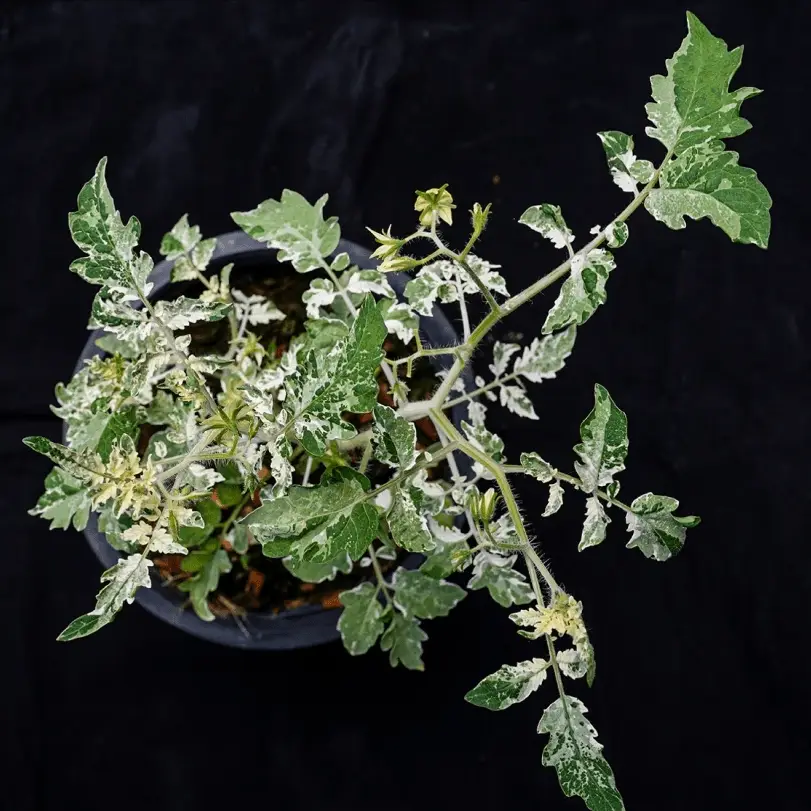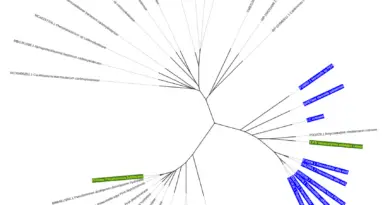Leaf Variegation: New Genetic Clues Revealed!

A recent study published in BMC Plant Biology titled “Mutation mapping of a variegated EMS tomato reveals an FtsH-like protein precursor potentially causing patches of four phenotype classes in the leaves with distinctive internal morphology“ sheds light on the molecular mechanisms behind leaf variegation in tomato plants. Leaf variegation, characterized by diverse color patterns on foliage, has gained popularity in horticulture, especially among urban and home gardeners who appreciate the aesthetic appeal of variegated houseplants.
The research focused on a tomato plant from an EMS-mutagenized seed population exhibiting variegated leaves with multiple shades: dark green, medium green, light green, and white. EMS-mutagenesis is a process where seeds are treated with a chemical called ethyl methanesulfonate (EMS) to induce random genetic mutations, creating diversity for study. By employing microscopy, chlorophyll content measurement, and advanced machine-learning image analysis, the study meticulously compared the cellular and molecular differences between variegated leaves and normal green leaves.
Genetic Insights into Leaf Variegation
A significant discovery of the study was identifying a mutation in a gene coding for an FtsH-like protein precursor, a crucial enzyme linked to variegation. The FtsH enzyme plays a vital role in chloroplast development and photoprotection mechanisms within the plant cells. The mutation appeared to impact chloroplast structure and function, leading to the distinctive variegated patterns observed in the leaves.
To uncover this genetic link, researchers utilized bulk segregant analysis to compare the genomes of plants with normal and variegated leaves. This technique helped detect DNA segments, including single nucleotide polymorphisms (SNPs) and insertions or deletions (InDels), associated with the variegation trait. The mutation in the FtsH-like protein precursor gene likely created a new microRNA binding site, suggesting a potential regulatory mechanism at the RNA level that could disrupt normal enzyme function in the chloroplasts.
Challenges and Implications for Future Research
Further analysis emphasized the essential function of the FtsH enzyme in maintaining chloroplast integrity and overall plant health. The variegated areas, particularly the white sectors, showed significant reductions in chlorophyll and carotenoid content, underscoring the enzyme’s role in pigment accumulation.
However, the study acknowledges limitations that warrant future exploration:
- Mechanistic Understanding: The precise mechanism by which the FtsH-like protein mutation affects chloroplast function remains to be fully elucidated.
- Cross-Species Applicability: Investigating whether similar molecular mechanisms cause variegation in other plant species could determine the universality of these findings.
- Agricultural Implications: Understanding this mechanism may have broader implications for crop productivity and resilience.
This research highlights the FtsH-like protein precursor’s crucial role in deciphering the molecular basis of plant variegation. By offering insights into the genetic and enzymatic factors influencing variegation, the study opens avenues for future genetic and biotechnological interventions. These findings have the potential to impact agricultural practices by improving plant health and productivity. Additionally, they align with the growing popularity of variegated plants in home decor, suggesting applications in enhancing the visual appeal of houseplants. The integration of scientific research with consumer trends in horticulture underscores the multifaceted significance of this study.
References
- Original Research Paper. Mutation mapping of a variegated EMS tomato reveals an FtsH-like protein precursor potentially causing patches of four phenotype classes in the leaves with distinctive internal morphology. BMC Plant Biology.
Keywords
Leaf Variegation, Tomato Plants, FtsH-like Protein Precursor, Chloroplast Development, EMS Mutagenesis, Plant Genetics, Horticulture, Chlorophyll Content, Bulk Segregant Analysis, MicroRNA Binding Site
Disclaimer: The information presented in this article is for informational purposes only and reflects the findings of the referenced study as of the publication date. For detailed information, please refer to the original research paper or consult professionals in the field.



